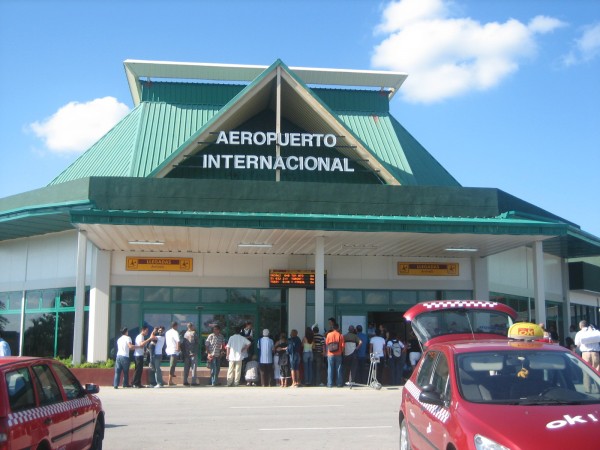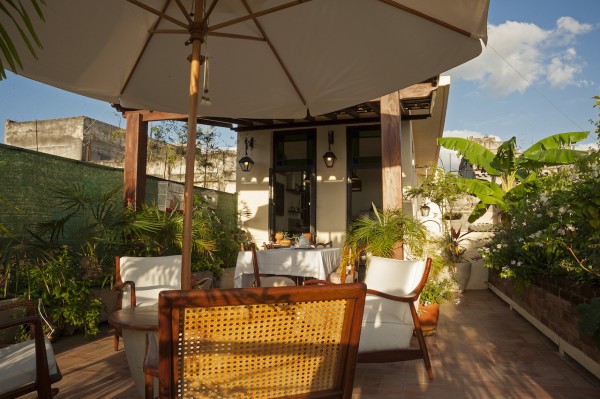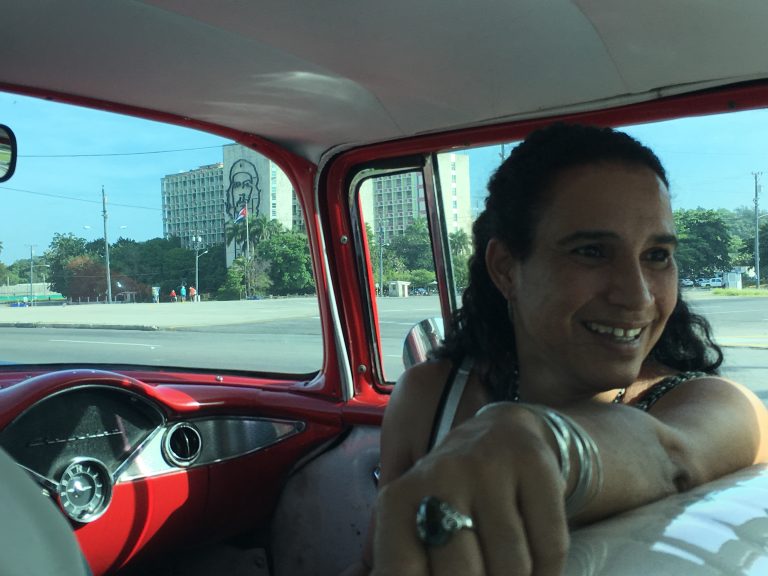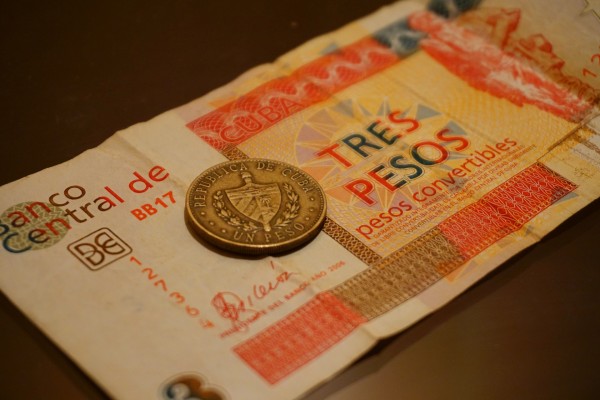
OUR BEGINNER’S GUIDE TO HAVANA
Following recent improvements in US-Cuba relations, there has simply never been a better time to visit the island to experience her culture and spectacular natural beauty firsthand! However, making sure your trip is enjoyable while still complying with U.S. government travel requirements can be tricky, so we know you probably have a lot of questions. To help you master the basics and then start planning your dream trip to Havana, Exeter Latin America has put together a basic list of things you need to know when traveling to Cuba. Havana is a must for any first-time visitor, and we typically suggest a minimum of 3 nights to really enjoy and not feel rushed. With an extra night or two, you can have a fuller Havana experience or even take a day trip to the lush Viñales Valley, heart of the tobacco-growing region. With a full week, you’re able to visit not only Viñales but also colonial Trinidad with its nearby Topes de Collantes national park. To explore the eastern Cuban delights like Santiago and Alejandro de Humboldt National Park, you need much more time to traverse the island by car (domestic flights can be unreliable so we like to avoid them whenever possible.) Or, given how close Cuba is to the U.S., you may decide to save eastern Cuba for your return trip – we guarantee you’ll want to return to Cuba at least once! Because of the tremendous increase in demand for travel to Cuba, particularly Havana, we recommend starting the planning process at least 3-4 months in advance to have the most comfortable possible experience. November-April offers the best weather overall, with slightly milder temperatures and much less rain but, as a result, this is high season so planning ahead is particularly important in these months. Restrictions on travel to Cuba by Americans still exist but have eased. While classic tourism is still prohibited, some travel is permitted as long as it falls within one of 12 categories authorized by the U.S. Department of Treasury, including the people-to-people exchanges that Exeter Latin America offers on a custom, private basis. All travelers to Cuba are required by airlines, travel insurance companies, and most tour companies to self-certify the specific license for which their trip to Cuba journey qualifies. So, while you can’t legally just go and lie on a beach for 3 days, you instead have a complete program of fascinating encounters and visits to experience and enjoy this moment of historic change in Cuba. Your Exeter Latin America travel manager can help you plan a custom, private trip that satisfies all the requirements while still guaranteeing you both fun and some flexibility. Flying to Cuba from the U.S. got a lot easier in 2016, when the U.S. government approved the applications of nearly a dozen airlines to fly to Havana and other cities. There are 20 approved nonstop flights weekly from the U.S. to Havana, beginning operation as early as late November 2016. Two thirds of the flights will be from Florida – Miami, Ft. Lauderdale, Tampa and Orlando – and the rest from Atlanta, Charlotte, Houston, Los Angeles, Newark and New York. Online check-in typically won’t be available for the flight into Cuba, so if you are connecting from somewhere else you’ll want to allow minimum 2 hours between flights in order to complete the required steps at the gate before boarding. If on a nonstop flight, plan to arrive at the airport 3 hours before departure. The Cuban visa, or tourist card, can normally be obtained via your airline – either as part of the ticket price or a nominal separate charge – along with the mandatory Cuban health insurance. For most air carriers, verifying or selling you your Cuban tourist card is part of the pre-boarding steps, which is why extra time is required at the airport before departure. Remember that obtaining the Cuban visa is completely separate from making sure your trip is compliant with U.S regulations on Cuba travel. Any airline will require you to certify the specific license for which your trip to Cuba journey qualifies Finding the right accommodations will make or break your stay. There is a shortage of inventory in Havana, particularly the high-end hotels and villas sought by discerning travelers – and this is certain to become more challenging as all the seats on those daily flights from the US begin to fill up. Given that, you’ll want to figure out your lodging at the same time (or even before) as your flights! There are a few good hotel options for upscale travelers in Havana, but staying in a privately-owned home is often the way to go. Whether renting out a privately-owned villa or apartment or actually staying in a family home, this is how you experience Cuba up-close and personal. You’ll enjoy more personalized service, infinitely better food, greater flexibility and, most importantly, time to have meaningful interactions with your Cuban hosts. Your Exeter Latin America travel manager can help you find the right fit for group size and budget, and ensure the quality of both accommodations and service to give you added peace of mind. Because of the U.S. travel regulations, we explained above, most U.S. visitors to Cuba do people-to-people exchanges that involve a full daily schedule of meaningful interactions with the Cuban people. This means you have to plan before you go, not only to ensure you have the required documentation of the required full program of activities, but also so you can focus on enjoying yourself from the minute you step off the plane! Working with an experienced partner ensures you have the best available accommodations and transportation, experienced English-speaking guides, and unforgettable experiences 100% tailored to your specific interests. Plus, you’ll get insider knowledge of the hottest new restaurants and nightlife options, and the peace of mind that comes with a local support staff in Havana available around the clock. Dine in privately owned restaurants (paladares) – These privately-owned restaurants, first authorized in the early 1990s, offer much higher quality meals than most government-run establishments. Explore the wonders of Old Havana – Although the colonial days are long gone, Old Havana is still home to one of the largest number of Spanish colonial buildings and therefore a UNESCO World Heritage site. Spend a morning with an architect walking the streets and seeing history come to life. Immerse yourself in Cuban art – The art scene, particularly in Havana, is thriving today and has garnered well-deserved international attention. Let an expert guide take you to visit the studios of established and emerging artists, and then head to the Fábrica de Arte Cubano one night for an unparalleled convergence of different artistic styles. Listen (and dance) to live music – Salsa, rumba, Afro-Cuban jazz, chachachá, son and on and on….Cuban music has had an outsized influence around the world, and it’s simply impossible to visit the island and not be moved by its infectious musical styles. Visit any of a number of community-based Afro-Cuban dance companies, and then head out after dinner to one of the countless live music venues. See the ballet – The art of ballet is highly valued in Cuba, with strong support from the government and prima ballerinas treated like superstars by local crowds. Cigars – No visit to the island is complete without an up-close look (and taste, if you wish) at what is arguably the island’s most famed export. The best place to do this is the Viñales Valley, the heart of the tobacco-growing region. Check out the malecón at night – The seaside promenades (malecón in Spanish) in Havana and other coastal cities is a prime meeting place for locals, particularly at sunset and throughout the cooler evening. Why let the locals have all the fun? Tool around in a vintage car – Against all odds, Cubans have managed to keep the ubiquitous 1950s American cars and trucks running for nearly 60 years. No visit for an American is complete without at least going for a ride in one these vintage beauties. Visit a food market – In Havana, you’ll find both markets sourced from government farms as well as some boutique markets with more diverse suppliers and products. Explore both with a local expert to understand why, learn about innovative solutions to food supply issues, and get insight into Cuban food history. Your guide could even give you a shopping challenge to understand firsthand the challenges faced by everyday Cubans. Leave your cell phone in airplane mode – Cuba has one of the lowest connectivity rates in the world, and internet service, even when accessible, is still quite slow. Take advantage of the rare opportunity to unplug, look around, and immerse yourself in your Cuba experience. Aside from the usual things you’d bring for a trip, here are some things you should think about for your visit to Havana. Again, cash is king in Cuba. Almost no U.S. bank cards can be used in Cuba, and even if you have a card from a non-US bank, ATMs are unreliable and can run out of cash even in Havana. Bring more than you think you’ll need for dining, shopping, and tipping. An experienced Cuba travel planner can help you estimate how much you need to bring based on your trip duration and other factors. There is a dual currency system in Cuba, with both the Cuban peso (MN) and the Cuban convertible peso (CUC). As a visitor, you will always be charged in CUC wherever you go and that is the currency you will buy when exchanging money. The CUC has no value outside Cuba, so you’ll want to be sure to spend it all before you leave. Voltage in Cuba is 110-220, with sockets fitting U.S.-style flat, two-pin plugs, although most hotels have 220 V sockets. You’ll want to read the instructions of any device before plugging it in! This is still largely limited to hotels and main squares in towns and cities, and can be accessed by purchasing internet cards. Supply of the cards varies, and internet speed can be painfully slow, so patience again comes into play. Our suggestion? Just enjoy the rare opportunity to go offline for a few days! Many of the larger hotels have a doctor or nurse on the premises, but you should bring with you any medication you might possibly need during your trip as you can’t count on finding it in Cuba. Any treatment at better clinics will require payment in cash (CUC), and you should also verify what coverage applies to you via your U.S. health insurance. Additionally, you’ll be required to purchase Cuban medical insurance in conjunction with your flight via a U.S. carrier. Tipping is very common and greatly appreciated in Cuba as a supplement to local salaries. This goes for guides, drivers, bathroom attendants, hotel housekeeping and restaurant servers. Your personal travel planner can give you detailed guidelines before you leave. Staying hydrated is important wherever you travel, and in Cuba you should always drink bottled water. Some travelers also prefer to err on the side of caution and brush their teeth with bottled water. If you’re worried about ice, it’s best to go without, although most places now use boiled or purified water for ice. Most guests do not find salad or vegetables to be problematic, but you should always do what makes you most comfortable. Cuba is considered a very safe country to visit and has a strong police presence particularly in areas heavily visited by tourists. However, the same common-sense precautions apply in Cuba as elsewhere. Try not to carry more cash than necessary, avoid walking alone at night on dark streets, take care with valuables you’re carrying (best to wear backpacks and handbags in front of you), and don’t wear expensive jewelry that might draw unwanted attention. As a Caribbean island, Cuba is warm all year with three seasons – dry, wet and hurricane. Dry season is November-April, and as you would expect is also high season. The wet season runs May-October, with hurricane seasons officially beginning in July. May-August are the hottest months, with high temperatures in the 90s (Fahrenheit) particularly in the east and south of the island. For those who extend their stay to explore beyond Havana, traveling by land is the most reliable way to go, given that the national air carrier often experiences delays and cancellations on routes that may be served with only one flight a day. This means that covering lots of the island requires time, due to the size of Cuba.U.S. traveler? Here’s what to know before and when you go to Havana
BEFORE YOU START PLANNING
PLANNING YOUR JOURNEY



WHILE YOU’RE IN HAVANA

